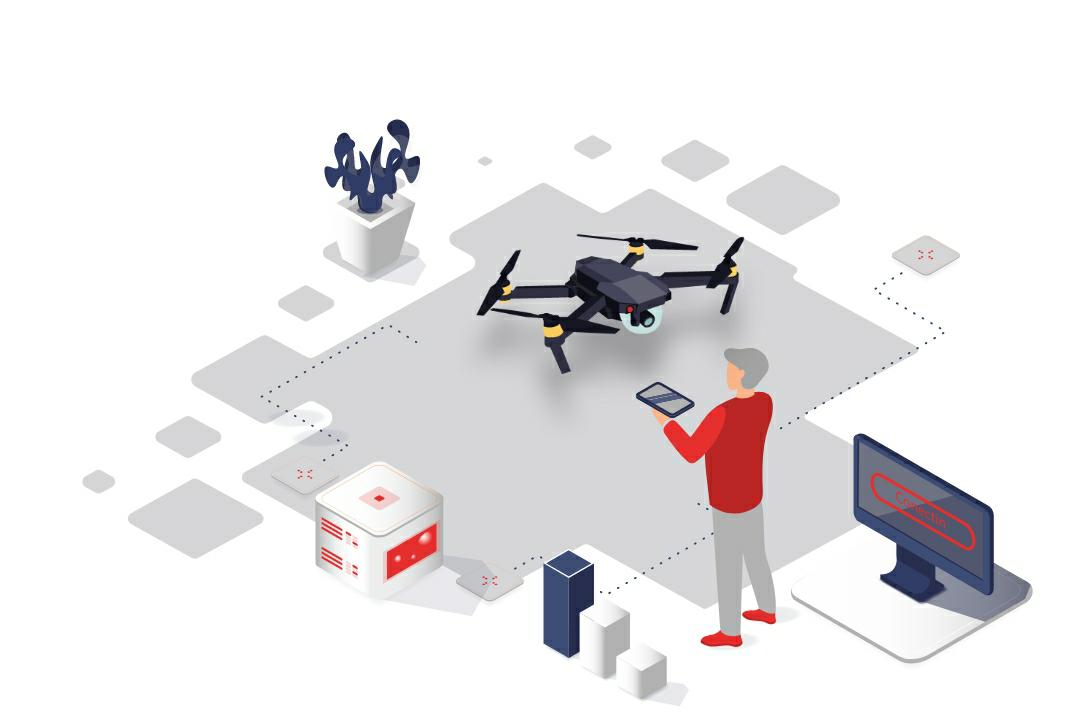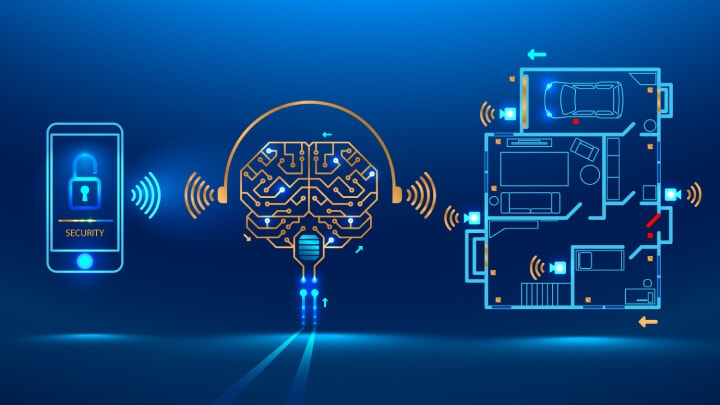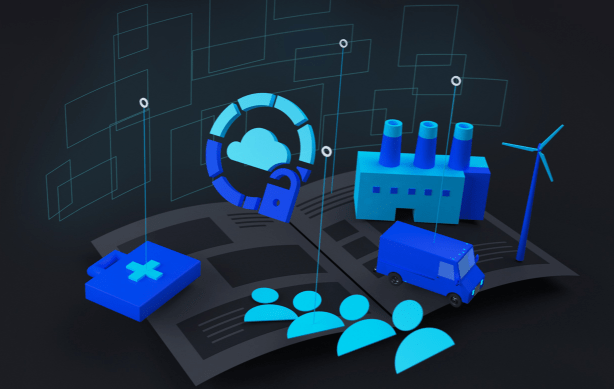Why do IoT projects fail and how do the other 42% succeed?

IoT is transforming the way people live and work. Smart devices have been connecting faster than people over the past couple of years. International Data Corporation estimates that there will be more than 41 billion connected devices by 2025, generating 79.4 Zettabytes (ZB) of data. But still, studies show that more IoT projects fail than succeed.
- Only 26% of 1,845 Business and IT decision-makers in Cisco survey claimed that at least one of their IoT projects was a success.
- Microsoft IoT Signals research report found that 30% of projects fail in the Proof of Concept phase itself.
This is partly because the Internet of Things (IoT) is still surreal in 2020, compared to other internet or communication technologies. In this article, we will look at why IoT projects fail so rampantly and how we can ensure their success. Let’s dive in straight away:
Why IoT projects fail
IoT projects are different as compared to conventional IT projects in terms of complexity, scope, and impact. The inability to comprehend this can lead to the failure of IoT projects. This failure can occur at any stage from project inception to execution and maintenance. Here we list some of the most commonly observed reasons behind the failure of IoT projects:

Organizational culture
Stakeholder engagement is crucial to the success of IT projects and IoT projects are no different. Here it is even more important to engage with the stakeholders because IoT is still a new technology and not understood completely. Employees feel threatened by successful IoT deployment. This leads to half-hearted efforts, which is a sure-shot recipe for failure.
Lack of readiness
An assessment must be undertaken even before planning for an IoT project starts. Most organizations fail to take stock of their existing technical resources, commitment levels of team members, availability of finances, etc. and hence these are not incorporated in the project plan. As we will see later, IoT projects usually run for years. If companies embark on these projects without being completely ready, it can lead to failure.
Lack of clear planning and strategy
Organizations must have a clearly documented strategy for each step of project planning, execution, and deployment. For instance, companies that do not plan to start with an exhaustive list of use cases, customer requirements, and market demand are bound to fail.
Cybersecurity
97% of companies are concerned about IoT security. Projects fail because the security of data, devices, web servers, and communication network was not taken into account in the planning phase. Later, projects have to be abandoned because of the huge costs they begin incurring.
Ignorance of the latest technologies
IoT technology keeps changing every day. IoT companies are rolling out new products – hardware as well as software – to address consumer pain points. Companies often fail to take advantage of the latest technologies to achieve better outcomes at a lesser cost.
Lack of skilled professionals
IoT is a relatively new technology and it is difficult to find experts who have experience in planning, developing, and executing end-to-end IoT projects. Often organizations try to use their existing talent pool by upskilling them. But this usually ends up in failure as the team is unable to lead the project to successful completion.
How can TechAhead help?
IoT use cases apply across industries and domains from manufacturing and retail to healthcare and supply chain. Companies are eager to adopt IoT to improve efficiency and productivity without compromising on quality. Businesses are rolling out IoT products for their customers at a never-seen-before pace. To take full advantage of the potential of IoT, companies need to approach each project in a structured manner.
Change the mindset
IoT projects have the capability to change an organization’s work culture, ethics, and values. Before embarking on any IoT technology project, all the stakeholders must be prepared to embrace change. It is the responsibility of the management to talk to the employees and reassure them that the IoT applications is designed to help them perform better and be more productive. The outcome of the project must be defined very clearly and aligned with the overall business goal. Ideally, the IoT project must be driven by realistic business needs, so that commitment level to successfully complete the project is high.
Detailed Planning
The first step in a successful project is always detailed documentation planning. The question is how detailed. Here IoT project managers can take the example of English explorer Reynolds Fiennes. He spent seven long years on planning for a voyage that took him three years to complete. This is not to say that you must spend two-third of your project time on planning!! But time allocated to planning must be proportional to the size and complexity of the project, the investment involved, and business goals to be accomplished. Because every hour spent on planning saves on weeks during the execution phase.
A word of caution is in order here. When planning for an IoT project, experts sometimes get so caught up in the novelty of the idea and how smartly it is being used that they forget about its feasibility. It is advisable to kick off the project with a discovery phase where ideas are vetted against defined business goals, customer expectations, and organizational capabilities. Some of the things that must be part of detailed planning are:
- What are the possible use cases?
- What type of devices can be used?
- Which existing devices should be made part of the IoT network?
- Where will the data generated be stored and analyzed?
- Is there a need for cloud services?
- What analytics should be made available to the user and in what form?
Feasible documented strategy
If planning is all about what needs to be done, the strategy is about how they need to be done. The most important thing about coming up with a strategy is that it must be documented. Having a documented strategy helps team leaders in tracking progress later on. Starting with the overarching strategy outlining the resources required to complete the project and timelines available, project managers need to have a documented strategy for:
- Incorporating security into every aspect
- Managing the life cycle of IoT devices and IoT applications
- Testing compatibility of brownfield devices
- Ensuring industry-specific compliance
- Scalability of the prototype to full-fledged internet of things
Long-term commitment
IoT projects are long-term commitments. Businesses need to think in terms of years, not months. With IoT technology changing every day, there is a real danger of the solution becoming outdated by the time it is fully operational. Therefore, it is essential to have a far-sighted strategy that allows for technological changes along the way. The best option is to have a strategy agile enough to incorporate changes at any stage. If needed. For every successful technological advancement, there are many fads and fly by night IoT platforms and technologies that make their appearance on the scene. It is essential to steer clear of them and incorporate only those that will really make a difference to the project outcome. Having a long-term perspective helps here.
Addressing security issues
According to Deloitte, security is a top IoT deployment challenge for multiple enterprises. IoT security must be considered at every step of the project, starting with planning. The types of IoT devices and networking devices to be used is an important consideration here. For instance, if users need to be able to log in using smartphones, an additional layer of mobile security must be added.
Organizations undertaking IT projects must perform due diligence into the available hardware and software for securing the devices and networks that connect them. The good news is that companies are willing to buy more IoT devices if they provide better security, even at higher prices. This has enabled security vendors to come up with devices as well as software that provide for security to the IoT solution. IoT projects must take advantage of these to cut costs and improve quality.
Use of Artificial Intelligence of Things (AIoT)
Combining artificial intelligence technologies with IoT infrastructure to improve efficiency and relevance of IoT operations and data analytics is called artificial intelligence of things (AIoT).

Image Source: IEEE Innovation At Work
IoT devices can generate a humongous amount of real-time data. It is easy to get swamped by data, without knowing what to do with it. The IoT project plan must discuss:
- Ideal data flow
- Which data needs to be collected?
- Where the data would be stored?
- What analytics are needed?
- Which devices would perform the analytics?
- Level of edge computing required
Integrating data collection with artificial intelligence can help understand which data needs to be collected and then reap the benefits of analytics using machine learning and big data technologies. This is an important factor in ensuring project success because for an IoT project it is measured in terms of relevant insights that help end-users.
Addressing hardware issues
No discussion on ensuring the success of IoT projects can be complete without talking about hardware challenges. We list some of the most important ones here briefly:
Choice of IoT devices
The IoT ecosystem is devices plus the network connecting them. Most organizations think of IoT devices first and then how to connect them. But the process should actually be reversed, or at least run parallel. Every organization already has an existing network. So, it makes sense to select only those devices that can work on this network or an upgraded version of the network.
First-mile connectivity
What is the last mile in data delivery network connections, is the first mile in the IoT ecosystem. The connection between the devices and sensors to the network that eventually collects data. This first Mile could be anything from Bluetooth and Wi-Fi to private networks. The type of device plays an important role in how it connects to the IoT network. It should be taken into consideration to ensure uninterrupted connectivity. If the need be, specialized vendors should be on-boarded help with first Mile connectivity, via customized devices or protocols.
System integration
As discussed, the IoT ecosystem is multi-layered — devices, analytics, cloud, network. There needs to be a perfect integration between all these elements to ensure the smooth functioning of the IoT system.
Partnering with experts
Just because you are ultimately responsible for the successful implementation of the IoT project, you need not do everything yourself. Microsoft reports that 38% of companies are not using more IoT due to project complexity and technical challenges. Partnering with experts, wherever required, in any phase of the project, increases chances of success.
Let’s take an example. The business goal of IoT projects is different for different industries. So, while fleet management is important to the transportation industry, supply chain optimization is the topmost priority for retail. If governments look for public safety, the healthcare industry is invested in tracking patients, staff, and inventory. Business analysts can help in identifying the use cases most suited for each project and suggest solutions depending upon the strengths and weaknesses of the organization.
Similarly, if you do not have IoT experts in your organization it makes sense to partner with Internet of Things (IoT) companies for project development and deployment.
The Way Forward
The Global market for IoT end-user solutions is estimated to be around USD 1.6 trillion by 2025. Studies have shown that IoT adoption across all industries like automotive, retail, healthcare, consumer, manufacturing, mobility, etc. is set to grow. If you want to adopt IoT to improve costs and efficiency of your organization while maintaining business value, you must strive to deploy IoT projects successfully.

As you can infer from our discussion, challenges are of two types – organizational and technical. As a business leader, you can take care of the organizational challenges through open and honest communication. And it has to be an ongoing process that continues until the successful deployment of the project. For the technical challenges, you might not have in-house experts, considering IoT is a relatively new technology. In that case, you should consider partnering with the right vendors. Keeping in mind the points discussed here will help keep you on track and take full advantage of what IoT has to offer.
Summary
More and more devices are connecting to each other to create an internet of things, which produces data to improve the way people live and work. According to estimates, there will be more than 41 billion connected devices by 2025. But studies have shown that only 26% of IoT projects undertaken are successful. The challenges in successfully completing an IT project could be because stakeholders are not ready to embrace change brought about by the successful deployment of IoT projects. Or, there may be technical challenges like lack of proper planning, skilled team members, long term commitment, or sufficient budget allocation.
To complete an IoT project successfully, businesses need to take a structured approach right from inception. A detailed plan must be documented so that project managers can take stock of the progress against it. Cybersecurity and hardware issues must be addressed properly, and if the need is the company should partner with experts to ensure success. To reap the full benefits of IoT, Technologies like Artificial Intelligence (AI) and machine learning and big data must be utilized to generate analytics as per requirement.
Source: techaheadcorp






